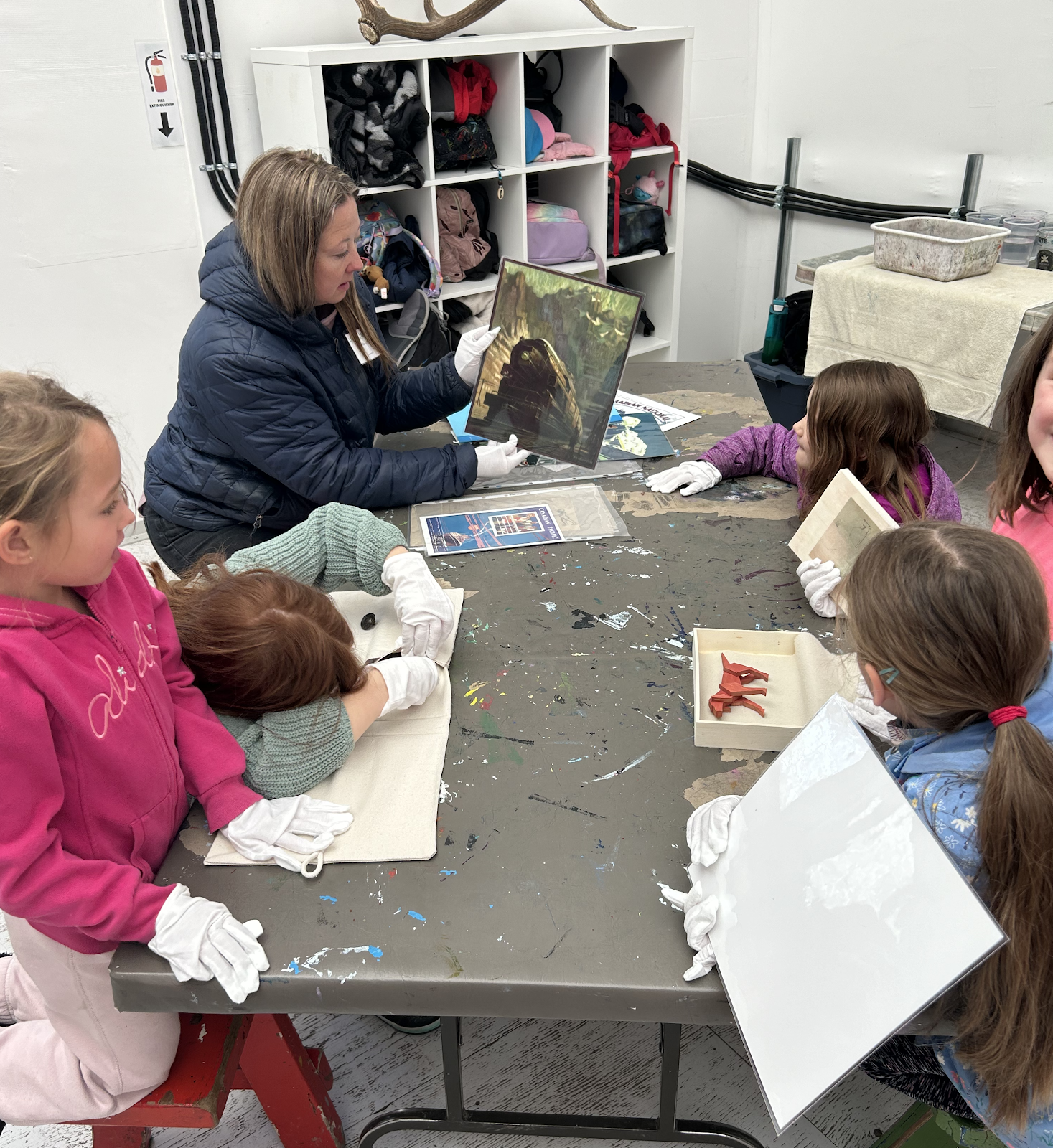Dear Parents,
I hope that everyone is enjoying the spring weather this long weekend! Read below to hear about our week!
Reminders:
As a reminder, we will be going to the Leighton Art Centre on Monday April 22 for the whole day.
The Leighton Art Centre is located 30 mins outside the city limits. The weather conditions are slightly different at the art centre compared to in the city. Currently, there is still snow on the ground and temperatures are often cooler. Please send your child dressed in layers(t-shirt, sweater, jacket), hat, mittens, jacket, and boots that will keep their feet warm and dry. It is recommended that you pack an extra pair of socks and change of clothes in case it is needed. As well, we will be active all day! Please pack a sizeable snack, full leakproof water bottle, and lunch for your child.
Social Studies
This week we have been building our background knowledge and learning about the founders of the Leighton Art Centre AC and Barbara Leighton. Both were artists and contributed to the foundations of art education in Alberta in a different ways. Students viewed and responded to photographs of the Leighton Art Centre when it was originally built and how it exists now. As well, students looked closely and responded to different pieces of artwork by both AC Leighton and Barbara Leighton.
Learning Intentions
Click on the links below to learn more about AC and Barbara Leighton and the legacy that they created.
https://www.youtube.com/watch?v=lQSZvAwuSk4&t=6s
https://www.youtube.com/channel/UCryNtV6vJVklLuTGHdgJowg









Math
In math we have been working on deepening our understanding of addition by counting on and rearranging numbers to create “friendly” numbers like 10 to add and count on from. As well, we worked with Mrs. Gordon to practice our doubles strategies with number facts up to 10.
Learning Intentions
Any addition situation involves parts and a whole. The parts are known, but the whole is not known.
There are always multiple strategies for determining the result of a computation, whether it is an estimated or an exact result.


The following is a summary of key ideas your child is learning in mathematics. You can use this summary as background and to support your child. Some suggestions for simple activities are included.
What Is Counting On?
Counting on means starting to count from a number other than 1. To count on, you hold one number in your head, while you count to add a second number.
For example, to count on from 4, you would say 5, 6, 7, … .
Usually, you don’t say the number you are counting on from, but you could say it in a whisper.
How Can You Add by Counting On?
• | You can add two amounts by starting with the first amount and counting on the second amount. Don’t count the first amount again. For example, you can add 5 and 3 by counting on from 5. You could say 6, 7, 8. The addition is 5 plus 3 is 8. 
You can put down objects to count the second group, or you can use your fingers to keep track of the numbers you say. The number of numbers you say is the second amount. You could say 5 … 6, 7, 8. That’s 5 and 3 more is 8. 
|
• | Sometimes it is quicker to count on by 2s. If you count on by 2s, it can be a little trickier to keep track of how many numbers you count. For example, to add 6 to 8, you might say 10, 12, 14 if you can keep track of adding 6 by saying only 3 numbers. |
• | Most students in Grade 1 will find it easier to keep track of addition if they count on by 1s. |
When Is Adding by Counting On Useful?
You can add any numbers by counting on, but counting on is especially useful when the second number is small. That’s why it is sometimes useful to think about adding numbers in a different order.
For example, you can think about 3 + 8 as 8 + 3 since it’s much quicker to add 8 and 3 by counting on from 8 than it is by counting on from 3.
Helping Your Child
It is useful for children to practise counting on, and they can practise at any time. For example, if you and your child are waiting for an appointment or travelling on a bus or in a car, you can say, “Count on from 10” or “Let’s count on from 4.” But to count on for addition, you need an adding situation.
You can encourage your child to count on whenever two amounts are being combined. For example, if you have gathered 4 library books and another 5, you could say, “This pile has 5 books. Count on 4 more to find out how many books we are taking out altogether.”

Make 10
It is extremely useful for students to have opportunities to learn and internalize the various sums that make 10: 5 + 5, 6 + 4, 7 + 3, 8 + 2, and 9 + 1. Internalizing these facts comes from practice.
Using the 10-frame can be useful, since if a frame is full, it shows a fact that sums to 10.

Literacy
This week in writing, we worked continued to work on writing instructions. We read several funny “how to” books like “How to Walk an Ant”. Take a look at home for “how to” books to add into your family literacy time!. We worked Y sounding like E an I at the endings words. This is still challenging for some of us, so additional practice would be helpful.







